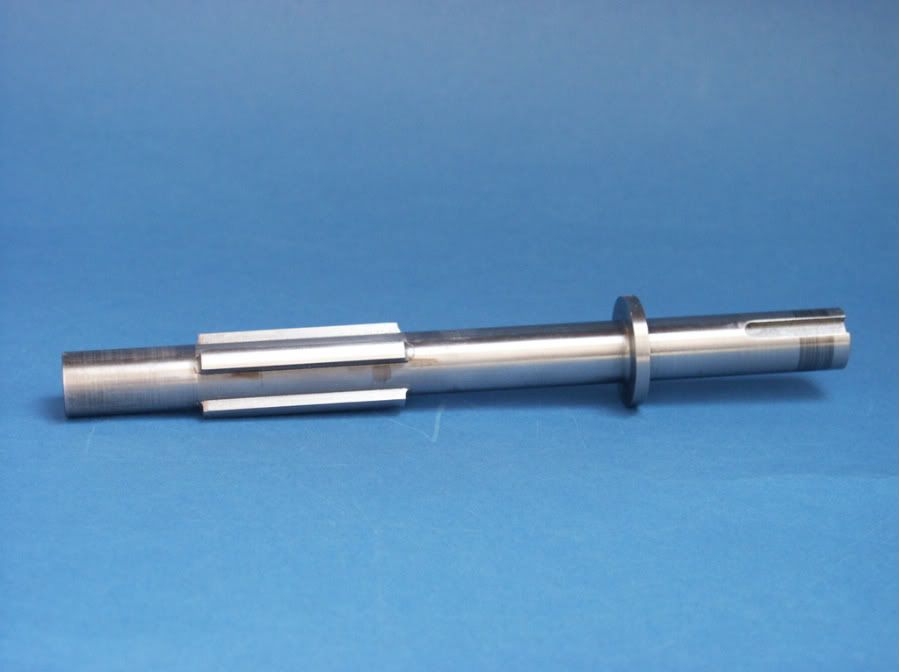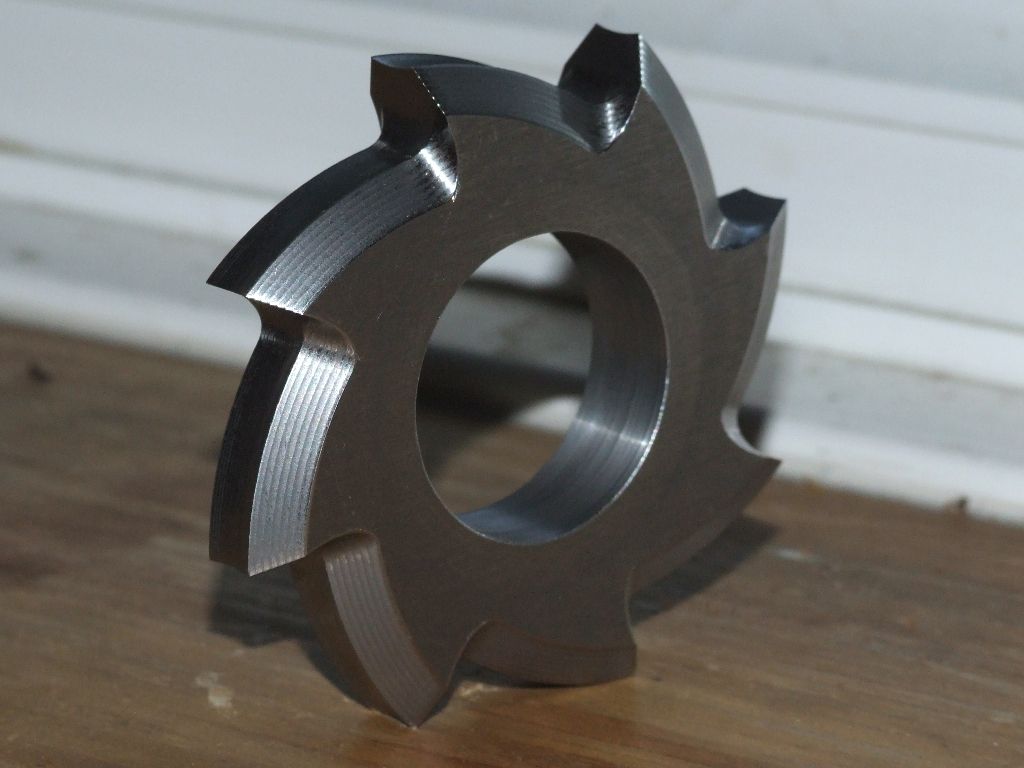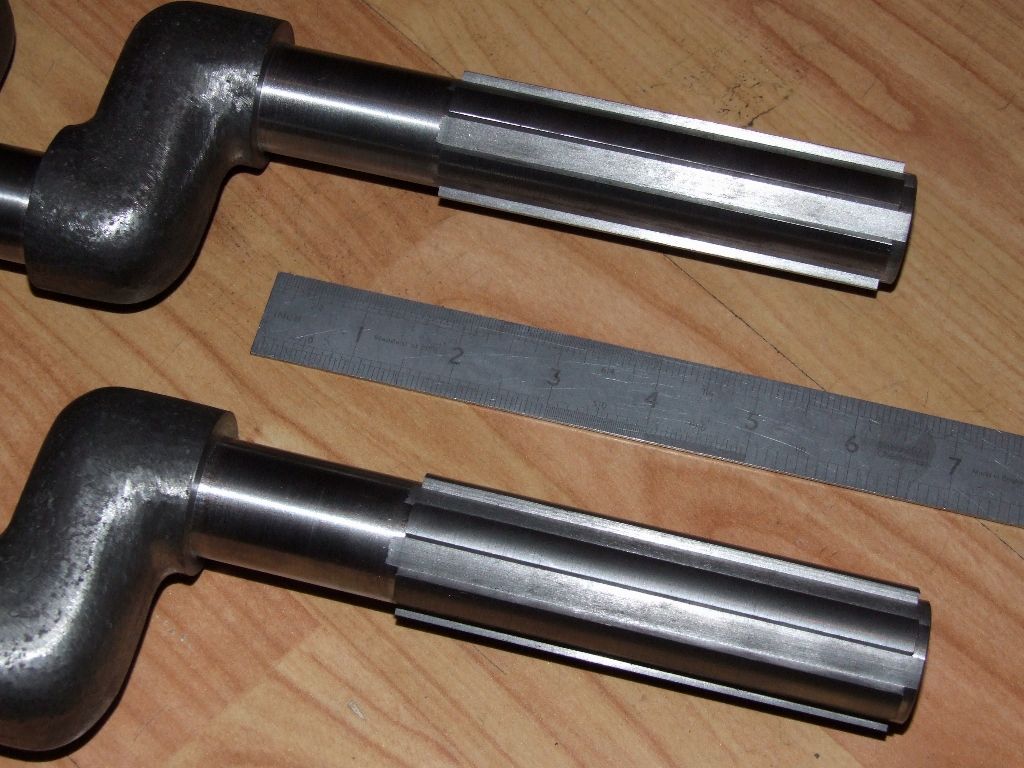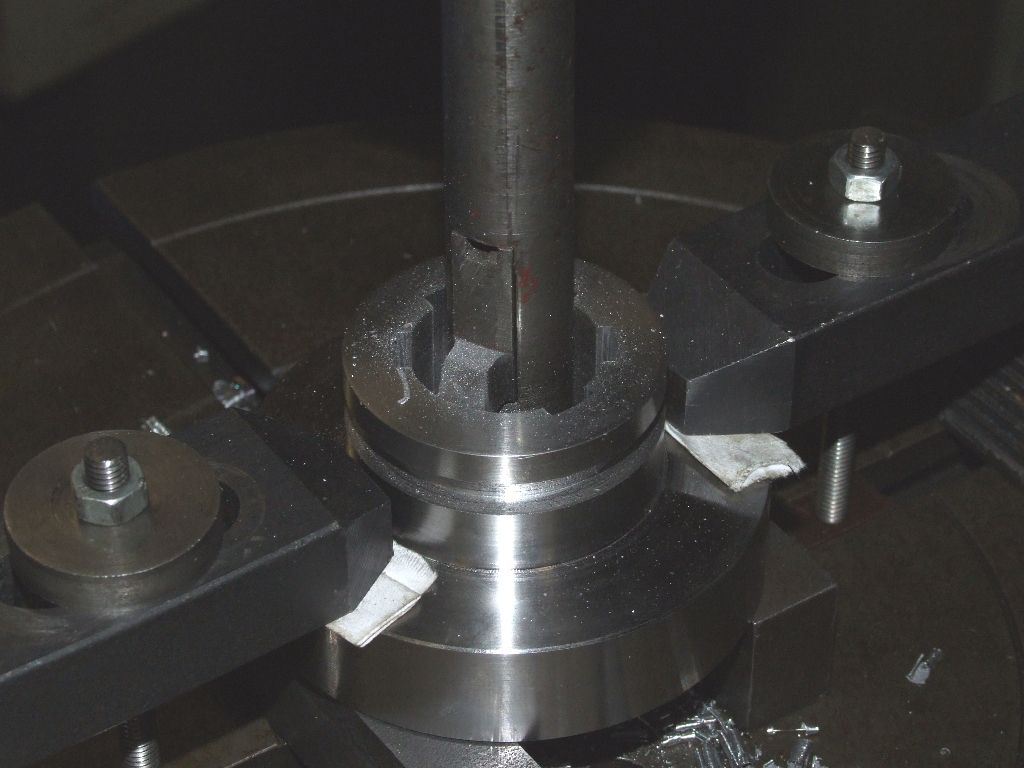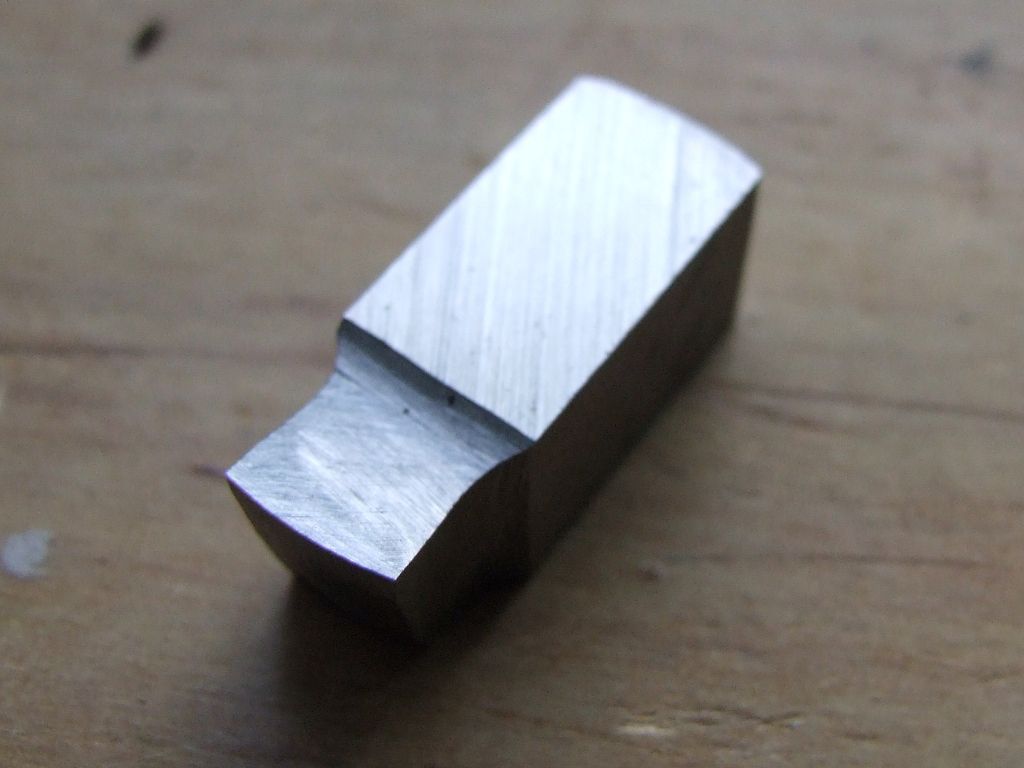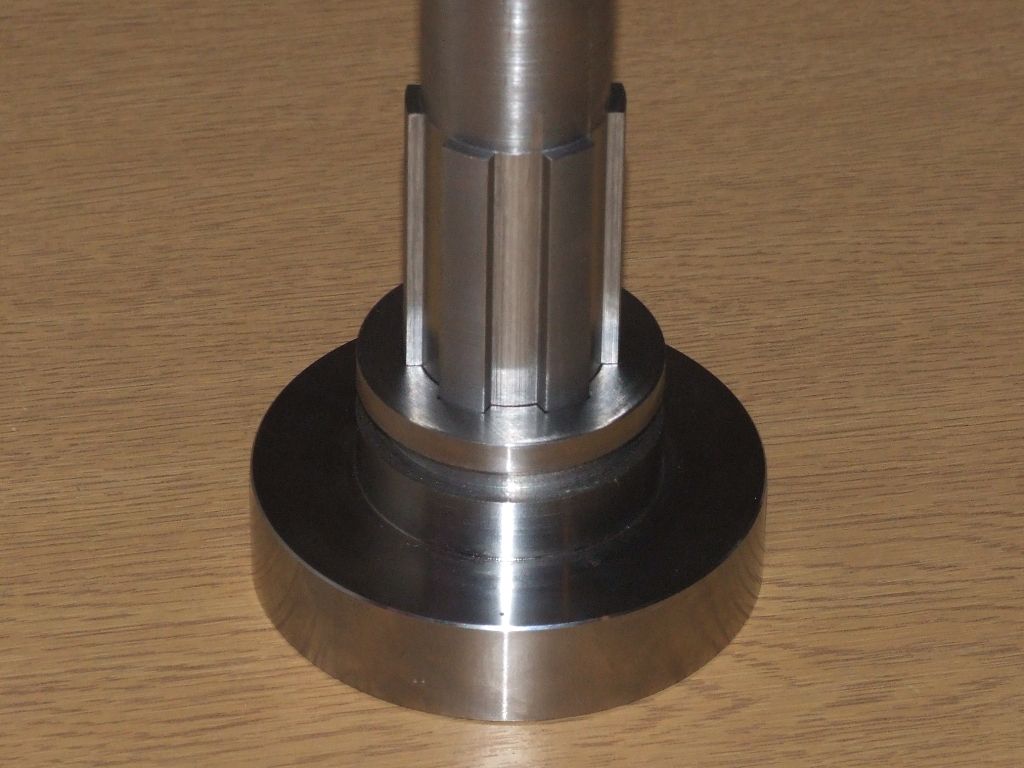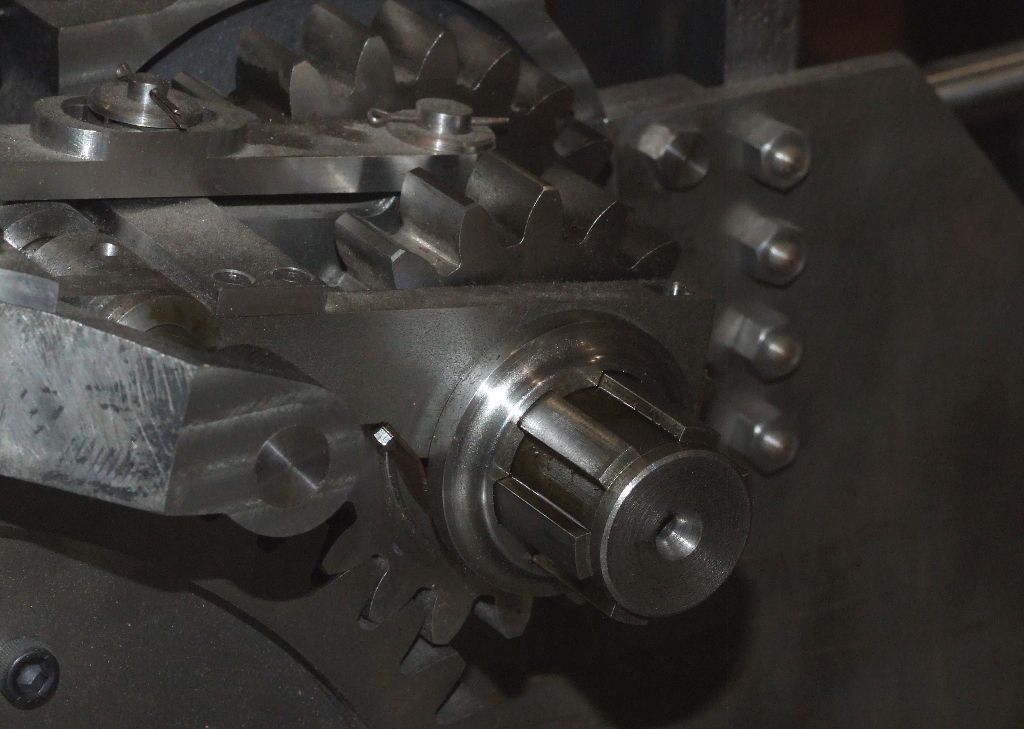When it came to machining the 6-sided splines on my Burrell SCC crankshafts I considered the slot 'n' key method, or using an offset endmill to form the sides of the spines and then nibbling out the space in between the splines. Neither seemed satisfactory, or prototypical. It is possible to buy commercial spline cutters, but none were available in the size needed. So I designed and made my own, from gauge plate which was hardened and tempered:

The splines were cut on a horizontal mill plus dividing head, the same setup as for gear cutting. Finished splines:

The internal splines were cut using a HSS toolbit and a slotting head with rotary table:

A length of HSS was ground on a cylindrical grinder to get the correct end radius (by measuring the diameter) and then cut in half and clearances added by hand:

The internal HSS toolbit is a couple of thou under width so final fitting of the gears to the splines was done with files. I made a test piece on scrap bar, and a messed up gear blank, to check out the process beforehand:

These are the finished splines, and outer gear:

Note that there is clearance on the inner and outer diameters, so the splines drive purely on the sides. The gears fit in all six orientations, although the shake varies from nothing to a little in the different orientations.
I made a few mistakes along the way. I didn't support the middle of the crankshaft when cutting the splines. Consequently the splines vary in width by a thou or two along their length. Each gear only works on half the spline length, so they are hand fitted to that length. The inner gear goes all the way along the splines, while the outer gear will only go half way down the spline. Originally i made a set of gears with a lot of inner clearance and with a straight ended slotting tool. But they didn't look right, so I binned them and made another set. In addition I hadn't got to grips with machining EN8 at the time, so the finish on the first set of gears was poor – another reason to recycle them.
Andrew
 JasonB.
JasonB.

